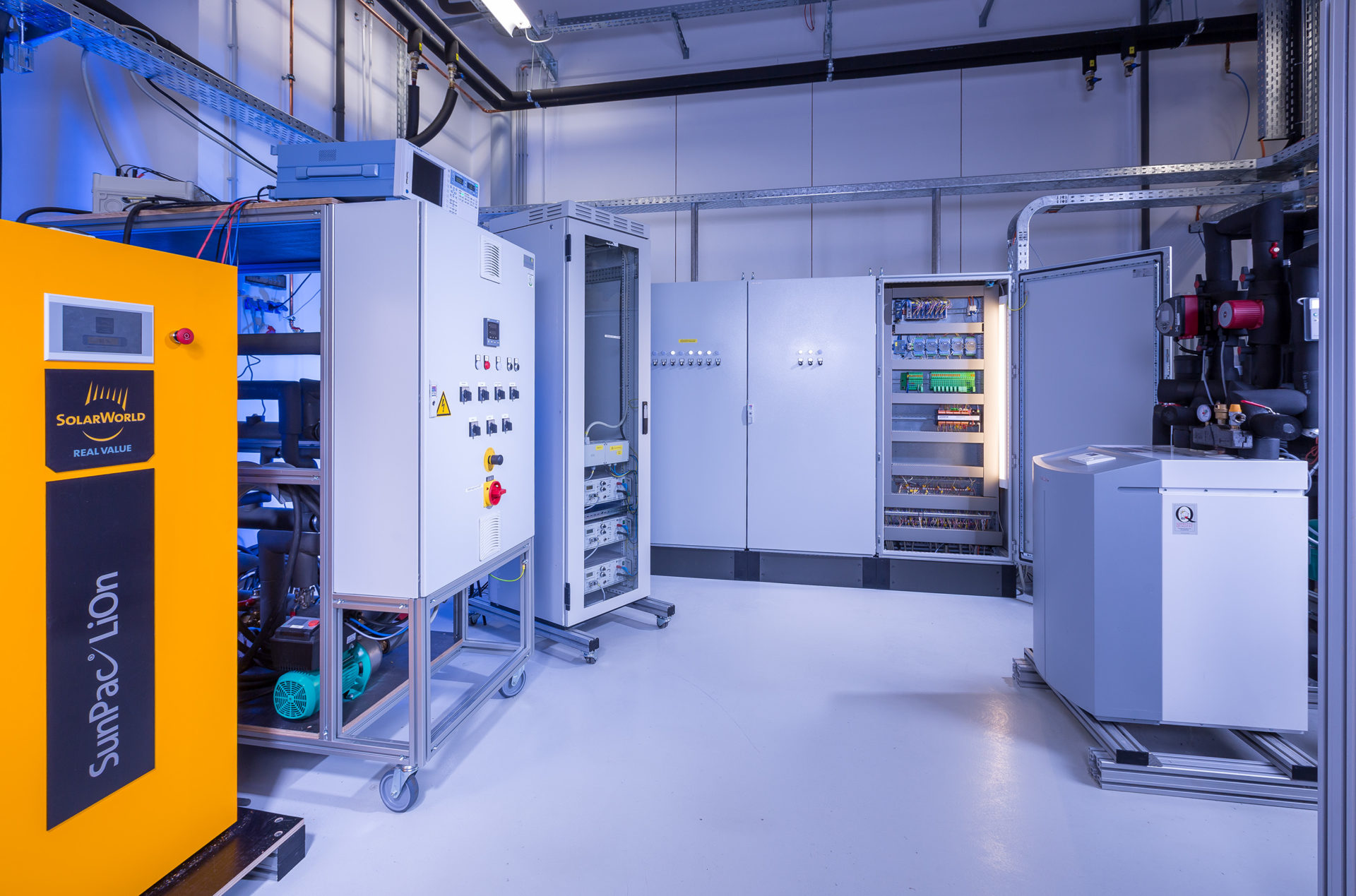
ISFH – Integrated Solar Systems (ISS)
Universal and flexible experimental facilities for integrated overall energy systems
In 2013, we built a new laboratory building for research and development of “Integrated solar systems technologies” (ISS). Here, we study the interaction of solar components that are currently developed at ISFH (PV modules, solar collectors, heat storage tanks) with other components (heat pumps, boilers, borehole heat exchangers, batteries) within a system. For this, we build hardware-in-the-loop test facilities that are capable of analyzing energy systems ranging from subsystems to complete energy systems in multi-family houses. The interaction of the physically installed components during a realistic dynamic operation is studied and optimized for typical load profiles and periods through emulating sources and loads. A central focal point is to move away from assessing single components and instead studying and optimizing the interaction of components in complex energy systems of complete buildings. Our studies result in algorithms for energy control systems and recommendations for installing energy systems.
Opportunities for research and development
- Measurement of energy flows at single components and within complete systems
- Analysis of the operation and transfer behavior of each individual system component, determination of efficiency and time constants
- Development of control strategies for components and complete systems
Concept of the test facility
- Hardware emulation of electrical and thermal sources and loads: solar power and solar heat, domestic power demand, space heating demand and domestic hot water supply under given synthetic weather conditions
- Electrical energy can be supplied from a PV system, a battery storage, a mini or micro cogeneration unit, or the power grid
- Heat can be supplied from a heat pump, a heater, a mini or micro cogeneration unit, a condensing boiler, or a solar thermal system
Currently available components and subsystems
- Field of PV modules: Emulation through a programmable 15 kW DC-source
- PV power inverter: 11 kW connected load, DC connection for battery storage
- Battery storage: 5.8 kWh net capacity, 2.7 kW charging power, DC-connected to the PV power inverter, interfaces to AC battery storage also available
- Domestic power load: up to 34.6 kW, programmable via a load curve with resolution up to 1 s, or via hardware-in-the-loop configuration, respectively
- Heat demand: programmable via load curves with resolution < 1 min, or via hardware-in-the-loop configuration, respectively
- Domestic hot water: emulated tapping at fresh water station or hydraulic module
- Space heating: emulation through appropriate hydraulic module
- Central heat storage: volume of 750 l, variable configuration enabled through a variety of connections and sensors
- Electrical heating elements: can be controlled separately and connected at different heights of the storage tank
- Heat pump: air-water and brine-water (currently installed) configuration possible, 3-way valves enable flow and return to feed different layers of the heat storage
- Heat pump source: emulation of the brine circuit through a controlled electrical heater, the source for the air heat pump is a climate chamber
- Cogeneration unit and/or boiler: the laboratory building provides connections for fuel gas and exhaust and also features gas measurement technology
- Central data collection system: recording of the energy flows of each single component (current, voltage, temperature, mass flow) up to every second
All system components can be exchanged
This way, very flexible systems can be realized and partners can integrate, analyze, and optimize their components or subsystems.

